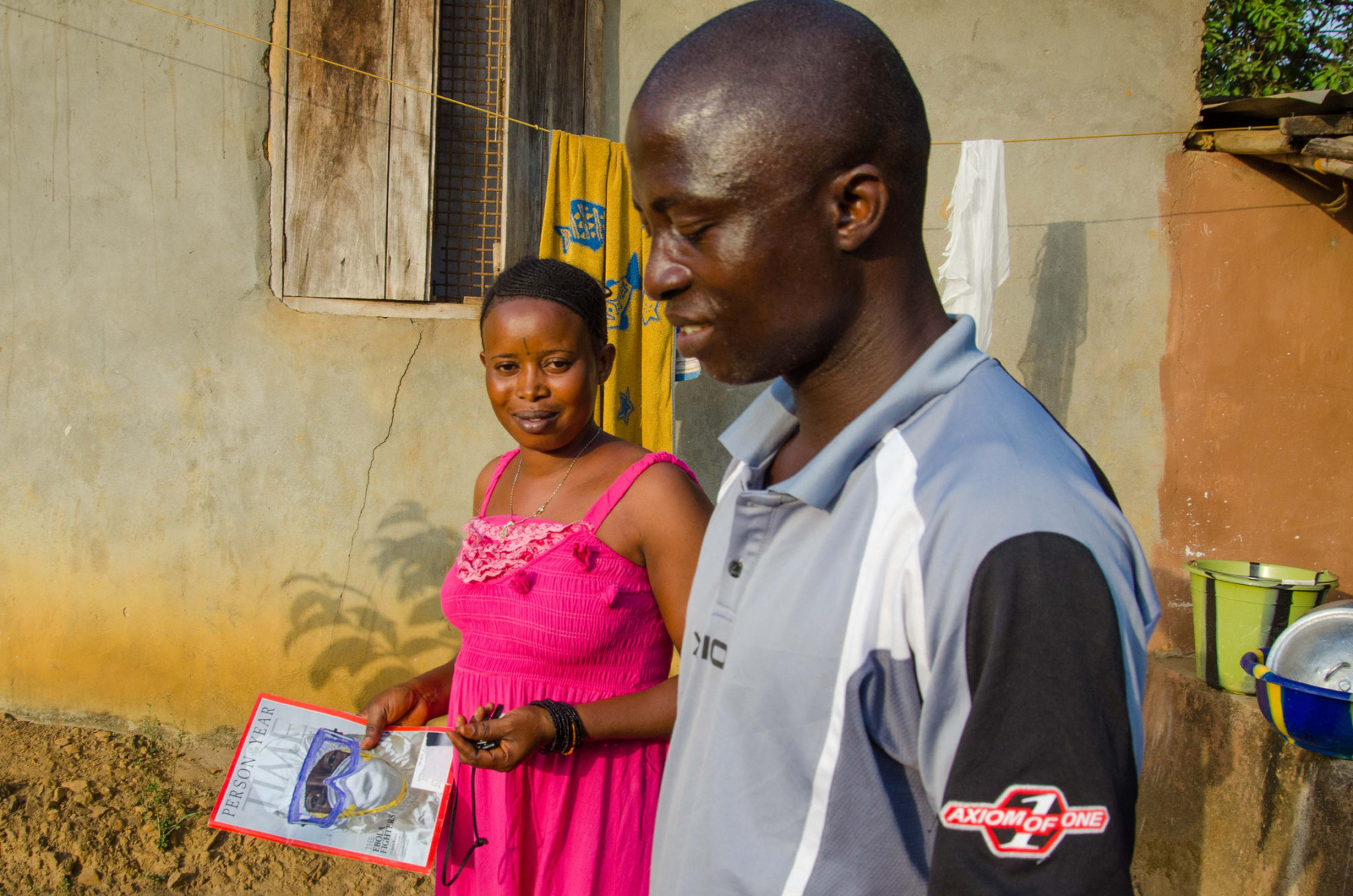
One of the joys of science writing is the chance to follow your curiosity. When you’re interviewing interesting people for any one story, they invariably drop some ear-tingling tidbits that seem like promising premises for future work. Yet I have to admit that if I had a nickel for every nugget of a new story idea that I left languishing in my reporting notes … well, I’d have a lot of nickels.
Judging by my highly informal and biased poll, retooling such nuggets into full-fledged spin-off stories of their own—or selling multiple similar stories to different markets—ranks among freelancers’ top underused skill sets. I’ve always attributed my own barrier to spin-off efficiency in part to plain old laziness, but Cincinnati-based journalist Margo Pierce laughs at that explanation: Laziness is precisely what motivates her perpetual retooling, she says. “I can’t find a fabulous, nobody-else-has-written-about-it, I-have-the-only-source, exclusive story every single day—that’s just draining,” she says. “But what I can do is take this one idea that I think is really fascinating, and that I have sources for, and I can spin it from five different angles.”
The approach can pay especially good dividends for early-career journalists, says Rose Eveleth, a Brooklyn-based producer, designer, and writer. When she was starting out, the practice allowed her to pitch ambitious venues with confidence. “Part of it was just knowing that I could pull it off, because I knew I could get the experts I needed,” she says. Once she published a couple stories on something, she found editors coming to her on the topic. And for writers reporting from far-flung destinations, supplementing a main project with smaller side stories on location is a good way to bulk up income to make travel possible in the first place, says Amy Maxmen, a freelance journalist based in Berkeley, California.
For all its perks, though, consistently repurposing material for multiple audiences takes planning and forethought, and perhaps even some systems and strategies. As Pierce puts it, it’s pretty much always possible, but she only manages to pull it off “as often as I do the work.”
Repetition Breeds Excellence
Eveleth has been an inveterate retooler since she wrote about Oscar Pistorius’s participation in the 2012 Olympics during her internship at Scientific American. Nobody, she realized, had really covered the science underlying the controversial question of whether his specialized prosthetic legs should disqualify him from competing. “The two labs involved [in determining Pistorius’s eligibility to compete] hated each other so much that I talked to a lot of outside people,” she says. That generated mountains of material from which Eveleth drew up a list of further possible story ideas, and over the next couple years several made it into print. Some involved extra exploration: The seed for a story for Modern Farmer was a paper on prosthetics for farmers that popped into Eveleth’s inbox. But others came straight from the Pistorius story interviews: A source’s rant that the media only wants to cover fancy bionic prosthetics, which aren’t always the best choice, turned into a feature for NOVA Next on the benefits of simpler prosthetics.
Eveleth’s secret weapon is a massive spreadsheet that contains every source she has ever spoken with, tracking their area of expertise as well as what to follow up with them about and when. “Even if I’m using them to just get at the right people, I go back to sources a lot,” she says. Usually, if she has what she needs from past interviews with a person, she doesn’t reinterview, but simply asks if it’s OK to reuse the material and offers to check that the repurposed material is factually accurate. No one has ever expressed follow-up fatigue; in fact, Eveleth says, because her stories have been much more nuanced than the gee-whiz coverage that prosthetics normally receive, experts seek her out themselves and send her tips.
When you’re pitching your second, third, or tenth story about something, do point out your past work to editors, Eveleth says. “I think people worry that, ‘Oh, I wrote about that so I can’t write about it again,’” she says. “I think it’s just the opposite—you can cover something better once you do it a couple times.” The trick is to make sure you’re pitching specific stories within your topic—not the topic itself.
Go Forth and Multiply
Pierce, too, considers generating multiple stories from the well of a single topic to be a big driver of her freelance life. As a matter of habit, she generates three or four possible angles for every story she does, even if she doesn’t always pursue them all. One trick for thinking up angles for a topic is to try pairing it with things that it doesn’t usually go with. If you want to write about a futuristic technology, for example, can it be applied to something old, or historical? Another is to brainstorm people who are affected by something but who aren’t being covered—“the adjacent others,” she calls them. For example, after writing about the use of Skype for instruction in rural classrooms for an education technology magazine, she pitched the same story to a human rights magazine, focusing on providing expertise to underfunded schools.
Last year, Pierce fished a story idea from a NASA publication that described a new technology that was initially designed to minimize vibration on spaceships and was later transformed into a tool for bolstering buildings during earthquakes. She’d never written about space before, but the technology piqued her interest. She successfully cold-pitched the piece to Quartz. The rocket scientist she interviewed for that story then invited her to Alabama to observe a test of the technology’s second iteration. Before heading off, Pierce pitched a handful of publications about covering the event and got two assignments—one of them an in-depth look at technology in NOW.SPACE and the other on quake-proofing historic and old buildings for Smithsonian. “The fact that I can do this as a total space rookie is the ultimate proof that pitching multiple stories works,” Pierce says.
Like Eveleth, Pierce generally gives sources a heads-up but doesn’t reinterview them for spin-off pieces if she already has the material. If she can do six stories off of four interviews, that’s time saved and money made. In this case, she asked her questions for the NOW.SPACE story and the Smithsonian story in a single interview. The scientists thought it was amusing, but were happy to give her what she needed for both. Now, she’s working on a pitch for a more ambitious feature on the technology. “You can take the same idea and develop it from a neat innovation that [readers] move on from to something that has real significance,” she says. “That can only happen when you spend the time with it—which a one-off piece doesn’t allow.”

Tales from the Road
Another super-concentrated way to really spend time with a topic is through extensive travel. Maxmen spent two months in Sierra Leone in 2014 and three more weeks in 2015 to report on the Ebola epidemic. For her, traveling in a country so different from one’s own means being in 24-7 reporting mode. The consequence of that is a deluge of overreporting. Her main grant, from the Pulitzer Center on Crisis Reporting, stipulated that she must have commitments from editors, so she started her trip with stories planned for The Economist and National Geographic. But she also planned to pitch and file other stories from the road, since she knew it would be much harder to reach some of her sources once she returned home.

Yet navigating the shifting landscape of what she wanted to cover, what editors responded to (plus which ones responded at all), and how much they paid turned out to be a challenge. The scope of one planned story was cut dramatically, editors’ timeframes felt much more drawn out than her own, and she turned down a few commissions because the stories didn’t seem as important as others she wanted to tell. Her main project was supposed to be a feature about doing disaster research, but when she arrived at her chosen hospital, she was overwhelmed by the stories of ambulance drivers, nurses, and lab techs who were not getting paid, despite risking their lives in responding to the epidemic. “I was completely torn up by that, so I dumped the research feature and wrote a news piece instead so I could devote my time to investigating pay,” Maxmen says. After a lot of pitching, she sold the story to Newsweek (and later expanded it into a 9,500-word e-book).
Maxmen’s strategy was to prioritize outlets that paid best, saving the strongest material for those stories and then assessing what was left. “It’s a mix of making money off the leftovers and also placing them in the right venues,” she says. A global health site called Humanosphere published some hard-won details—about tracking international donations for Ebola—that hadn’t fit into the Newsweek feature; the post didn’t pay much, but the work was done and Maxmen knew it would get eyeballs. She also pulled together a photo essay for Nautilus, a slide show for Scientific American, and several news stories for Al Jazeera and other outlets that each took a couple days to report.
All told, Maxmen published some 20 stories from those trips—some during, some after. She made sure to keep a daily travel diary and to take and back up thousands of iPhone photos. “It might be three months down the line when you find yourself with three days to spare, and you can kind of put yourself back there.”

Alla Katsnelson is a science writer and editor based in Northampton, Massachusetts. Her stories about brains, bugs, and all manner of life science topics can be found in PNAS Front Matter, Nature and its sibling pubs, Psychology Today, and Scientific American. She is also a contributing editor at The Scientist and editor of her local mycology club newsletter. Follow her on Twitter @lalakat.


